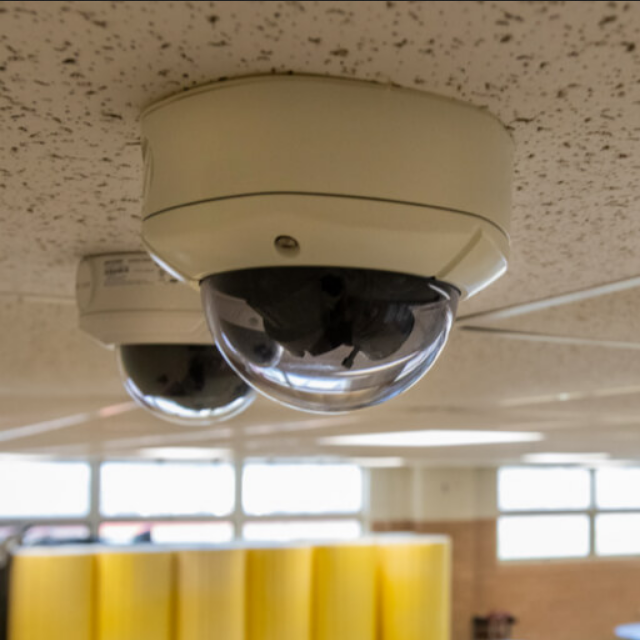
The transformative role of advanced video in Australian healthcare
Written by Ash Ramanayake, Country Manager, Milestone Systems.
In recent years, advanced video management software (VMS) has emerged as a transformative technology in the healthcare industry, with sophisticated platforms adding integrations with analytics, AI-enabled cameras, biometrics and more. With these sophisticated capabilities, VMS is revolutionising the way healthcare organisations operate, enhancing patient safety, improving staff efficiency, and enabling effective security measures – at the same time as achieving that all-important end goal, improving the patient journey through that particular facility.
This article explores the various ways in which advanced VMS is making a significant impact on healthcare settings.
Enhanced patient safety
Patient safety is of paramount importance in healthcare, and VMS plays a vital role in this aspect.
According to the most recent report produced by the Australian Commission on Patient Safety and Quality in Healthcare, the personal and financial impact of patient safety lapses is considerable, with stats suggesting approximately 12% to 16.5% of total hospital activity and expenditure was the direct result of adverse events. In fact, admissions associated with hospital-acquired complications (HACs)* were estimated in some years to cost the public sector $4.1 billion or 8.9 percent of total hospital expenditure.
While video certainly cannot be considered a ‘fix’ for all of the factors involved, there are many aspects of this expense that can be rectified or improved with better monitoring, analytics and clear information delivery such as that provided by an advanced video management software with deep integrations to other solutions.
For example, an advanced VMS platform enables real-time video monitoring of patient rooms, corridors, and critical areas, allowing healthcare professionals to promptly respond to emergencies or potential incidents. With embedded analytics, VMS can detect falls, monitor patient movements, and identify risky behaviours, triggering immediate alerts to the relevant staff. This proactive approach helps the facility respond to accidents and ensures prompt intervention, ultimately enhancing patient safety.
It is important to note that patient privacy is a constant consideration as well, and many features provided by cameras and the VMS on which they operate can facilitate this, such as redacting images (or parts of an image), or using infra-red cameras to monitor patient movement and position in a room, without providing invasive levels of detail
Improved staff efficiency
VMS contributes to optimising staff efficiency and streamlining operations within healthcare facilities. By integrating a VMS with other systems, such as access control and electronic health records (EHRs), healthcare organisations can automate various processes. For instance, the VMS can track the location of medical equipment, enabling staff to quickly locate and retrieve necessary supplies and thus reducing the time wasted searching for items. Additionally, video technology can be used to monitor and analyse patient flow and optimise staffing levels, ensuring efficient allocation of resources.
By automating certain routine tasks, data-driven video technology frees up healthcare professionals’ time, allowing them to focus on providing quality care to patients and ultimately improving the patient journey.
Improved patient journey
The healthcare system must, by definition, be highly regulated with the ultimate attention to due process. While this level of administrative detail provides safeguards to ensure a patient’s wellbeing, for those who are frequently in the hospital system it can also be a burden. Dialysis patients for example need to visit the same facility on a regular basis, which requires parking, checking in at reception, providing paperwork at several different points, and so forth. Video has the capability of reducing the burden on patients by speeding up these processes, and help automate parts of their journey through the facility’s system. Licence Plate Recognition (LPR) technology can allow them fast and seamless access to the carpark for example, and an integrated system can work in conjunction with access control technologies to allow fast transit through the building.
Effective security
It probably seems like the most obvious use of a video camera network, but ensuring a secure environment is critical in healthcare settings. Advanced video software enables comprehensive security measures, helping to safeguard patients, staff, and sensitive areas.
High-definition cameras integrated with a VMS platform provide clear and detailed video footage, facilitating the identification of individuals, objects, and incidents. The VMS can be configured to detect unauthorised access attempts, track suspicious behaviour, and monitor restricted areas.
In case of security breaches or emergencies, a VMS platform can automatically trigger real-time alerts, allowing security personnel to respond promptly and mitigate risks. The ability to remotely monitor live video feeds through mobile devices further enhances security measures by providing real-time situational awareness, enabling proactive responses to potential threats.
Data-driven insights
Advanced video software can be integrated with analytical solutions, allowing for the collection and analysis of the vast amounts of data a system can gather, thus generating valuable insights for healthcare organisations. By leveraging analytics capabilities, a VMS platform can provide statistical data on patient flow, wait times, and resource utilisation. These insights help healthcare administrators make informed decisions, optimise workflows, and allocate resources effectively. VMS analytics can also identify patterns and trends in patient behaviour, enabling healthcare professionals to develop personalised care plans and interventions. Furthermore, the data collected by VMS can contribute to research and quality improvement initiatives, helping healthcare organisations drive innovation and enhance patient outcomes.
The advent of advanced video management software has the potential to revolutionise healthcare operations, significantly impacting patient safety, staff efficiency, security measures, and data-driven decision-making. The VMS platform plays an integral role in enabling real-time monitoring, proactive incident detection, and immediate response. By automating processes and optimising resource allocation, a VMS improves staff efficiency and streamlines operations. Robust security measures ensure a secure environment for patients and staff. Furthermore, the solution can be configured to generate valuable data insights, enabling evidence-based decision-making and fostering innovation in healthcare. As technology continues to advance, the role of VMS in healthcare is poised to grow further, contributing to the delivery of high-quality care and improved patient outcomes.

